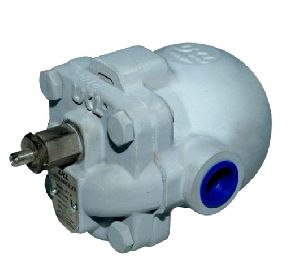
Ball Float Steam Trap
Get Price Quote
The enthalpy in the steam basically has two components : The Latent heat and the Sensible heat. Whereas condensate has only sensible heat. This condensate has to be removed as soon as it is formed, because it hinders to efficient heat transfer as well as leads to water hammer phenomenon as it is hot water (having more Specific Gravity) that moves with high velocity of steam (8 to 10 times higher than water), carrying enough momentum to rupture pipes and which is damaging to the plant pipelines as well as piping equipments. Hence, need to remove condensate from steam main and trap steam. This is done by steam trap.UKL Ball Float Trap discharge condensate near to steam saturation temperature, which works on the principle of Buoyancy, [densities difference of Water and Steam].The rising condensate level elevates the Float open the valve and discharges the condensate. When the level of condensate drops, the float falls down and the valve close the trap.It is commonly used for most process heating applications. Wherever steam is used for indirect heating application, the trap to be used must be of mechanical design. It is a continuous discharge type steam trap. This trap can handle very high condensate loads and the discharge will be proportional to the differential pressure across the trap. There may be other similar process applications where the heat load is small and a mechanical trap can handle small as well as fluctuating loads.This trap is provided with two optional features called Steam Lock release (SLR) and Thermostatic Vent (TV). The SLR is a manual operation to release steam that may hamper free movement of the float on water level. The TV will ensure that air and such un dissolved gases will be automatically vented out when present in condensate.